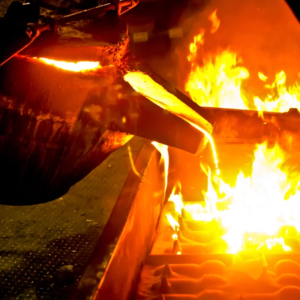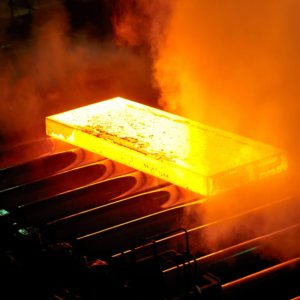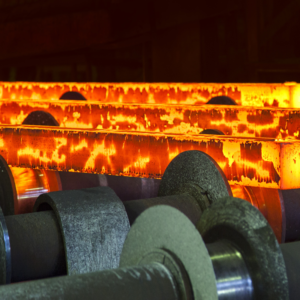Hey folks! Did you know that metal heat treatment goes way back, like ancient civilizations back? Yup, it’s been around for ages and has been a game-changer in tech advancements. And guess what? Today, thanks to this ancient practice, we’ve got super cool technologies making our machines churn out precise, top-notch parts.
Nowadays, industries use all sorts of heat treatment methods to tweak metal properties. It’s like giving metal a little makeover for different tasks.
So, sit tight! We’re about to dive into the world of heat treatment, where we’ll uncover its secrets, perks, and how it works wonders on steel. Let’s heat things up!
Metal heat treatment is a key process in the manufacturing and engineering industries and plays a key role in improving the mechanical properties of metals, especially steel. The process involves heating and cooling the metal to change its physical and mechanical properties, ultimately improving its performance and durability. In this blog, we will delve into the intricacies of heat treating metals, with a particular focus on heat treating various types of steel.
What is metal heat treatment?
Metal heat treatment is a controlled process involving the heating and cooling of metal to change its microstructure and obtain desired mechanical properties. The process may involve a range of techniques, each tailored to meet specific material requirements. The main goals of metal heat treatment include increasing hardness, strength, toughness and ductility, as well as enhancing wear resistance and workability.
 Types of Steel Heat Treatment
Types of Steel Heat Treatment
Steel is one of the most widely used metals across industries and undergoes different heat treatment processes to achieve specific properties. The following are the main types of heat treatments for steel:
- Annealing
- Normalization
- Quenching
- Tempering
- Surface hardening
Let’s explore each type in detail:
annealing
Annealing is a heat treatment process that involves heating steel to a specific temperature and then cooling it at a controlled rate. The purpose of this process is to soften the steel, improve its machinability, and enhance its ductility. Annealing also removes internal stress and refines the steel’s microstructure, making it more uniform and stable.
 Cremation Standardization
Cremation Standardization
Normalizing is a heat treatment process similar to annealing, but with a faster cooling rate. The steel is heated to a temperature above its critical point and then air cooled to achieve a refined grain structure. Normalizing helps improve the mechanical properties of steel, including strength and toughness, while also reducing internal stresses.
Quenching
Quenching is a rapid cooling process that involves immersing heated steel in a quenching medium, such as oil, water, or polymers. This rapid cooling causes the steel to harden by changing its microstructure, usually from austenite to martensite. Quenching is often used to achieve high hardness and wear resistance in steel, but can also lead to increased brittleness.
Tempering
Tempering is a heat treatment process after quenching that involves reheating the quenched steel to a specific temperature and then cooling it at a controlled rate. The process is designed to reduce quench-induced brittleness while maintaining the required hardness. Tempering also improves the toughness and ductility of steel, making it more suitable for a variety of applications.
 Case hardening
Case hardening
Case hardening, also known as case hardening, is a heat treatment process that introduces a high carbon content to the surface of steel, usually through carburizing or nitriding. This process creates a hardened outer layer while maintaining a tough and malleable core. Case hardening is often used to improve the wear resistance and fatigue strength of steel components.
The importance of heat treatment of steel
Heat treatment of steel is critical to achieve the required mechanical properties and performance characteristics in various applications. Whether it is enhancing the hardness and wear resistance of cutting tools, increasing the strength and toughness of structural components, or achieving the surface hardness required for gears and bearings, the right heat treatment process can significantly impact the performance and life of the steel.
In addition to improving the mechanical properties of steel, heat treatment of steel also plays a vital role in reducing internal stress, refining the structure, and enhancing the machinability and formability of steel. These advantages help improve the overall quality and reliability of steel components, making them more suitable for demanding and critical applications across industries.
In summary
Metal heat treatment, especially steel heat treatment, is a basic process that significantly affects the mechanical properties and performance of steel. Understanding the various types of steel heat treatment processes, such as annealing, normalizing, quenching, tempering and case hardening, is critical for engineers, manufacturers and professionals who work with steel. By employing the correct heat treatment techniques, steel properties can be tailored to meet specific application requirements, ultimately improving the quality, durability and reliability of steel components.
Alright folks, that’s a wrap on our heat treatment adventure! If you’ve got any burning questions or cool insights to share, drop them in the comments below. We love hearing from you!
Until next time, stay curious and keep those engines running smoothly. Catch you on the flip side for more fascinating blogs!

